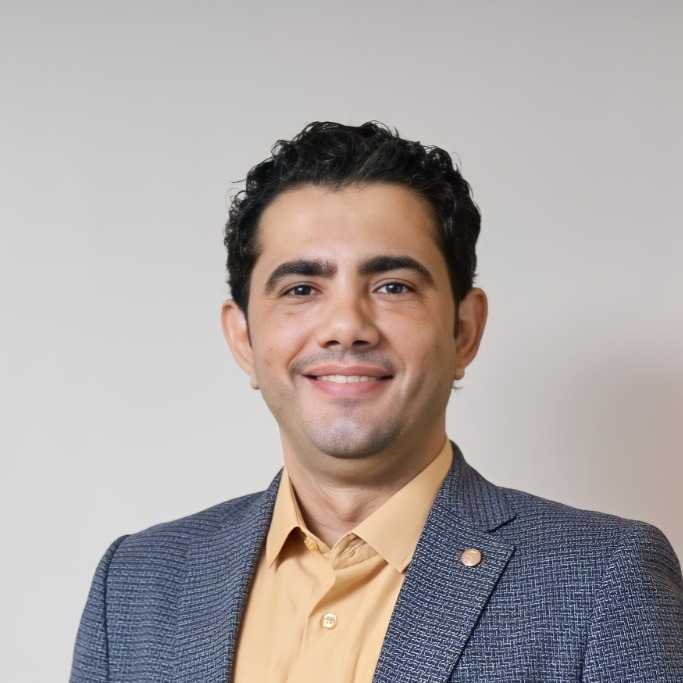Mental health Awareness

About Course
Course Curriculum
Introduction
-
Addressing Mental Health Stigma: The Need for Open Conversations to Combat Ignorance and Promote Understanding.
10:13 -
Quiz
-
Understanding Mental Health: The Impact of Social Connections and the Importance of Seeking Help
01:06 -
Quiz
Module 0 Introduction to Mental Health
-
Module 0 introduction to mental health part 1
15:20 -
Quiz
-
Harnessing Ancient Philosophies: Timeless Stoic Strategies for Modern Mental Wellness and Inner Peace
10:07 -
Quiz
-
Module 0 introduction to mental health part 2 :Understanding the Complex Relationship Between Mental Health Disorders and High Mental Well-Being
15:08 -
Quiz
-
Module 0 introduction to mental health part 3
16:13 -
Quiz
Module 1 Cultivating Inner Peace – A Journey to Mental Serenity
-
Module 1 Cultivating Inner Peace – A Journey to Mental Serenity part 1
15:12 -
Quiz
-
Cultivating Inner Peace Practical Strategies for Mental Well Being
08:35 -
Quiz
-
Module 1 Cultivating Inner Peace – A Journey to Mental Serenity part 2
15:27 -
Quiz
-
How to Be Mindful in Everyday Life | 25 Ways to Practice Mindfulness
13:31 -
Quiz
-
Module 1 Cultivating Inner Peace – A Journey to Mental Serenity part 3 :Supporting Employee Mental Health: Strategies for Healthcare Organizations to Foster a Healthy Work Environment and Culture
10:22 -
Quiz
Module 2
-
Module 2 Mental Health Awareness and Burnout for Healthcare Workers : think , feel and act.
09:37 -
Module 2 Identifying Burnout: Signs, Symptoms, and Building Resilience in High-Performance Work Environments.
10:54 -
Quiz
-
Module 2 Employee Assistance Program And Burnout.
15:43 -
Quiz
-
Module 2 Recognizing Burnout Signs and Symptoms Part 2.
15:20 -
Quiz
-
Module 2 Recognizing Burnout Signs and Symptoms part 3.
15:20 -
Quiz
-
Module 2 Burnout Among healthcare Workers 4
15:46 -
Quiz
-
Module 2 Burnout Among healthcare Workers 5
17:58 -
Quiz
-
6 Signs You’re Burnt Out, Not Just Stressed
06:18 -
Quiz
-
Your Body Knows You re Burned Out And what to do
07:49 -
Quiz
Module 3 Stress Management Techniques
-
Module 3 Stress Management Techniques part 1
15:15 -
Quiz
-
13 Stress Management Techniques
11:55 -
Module 3 stress management techniques part 2
15:17 -
Module 3 stress management techniques part 3
15:23 -
Stress Relief Tips – 7 Ways on How to Lower Stress
01:47
Module 4
-
Mental Health Myth Separating Fact from Fiction
09:03 -
Quiz
-
Module 4 compassion fatigue vs burnout part 1
14:52 -
Building Resilience for Healthcare Workers
06:29 -
Quiz
-
Module 4 compassion fatigue vs burnout part 2
15:43 -
Quiz
-
The Truth About the Burnout Epidemic
08:17 -
Quiz
-
Module 4 Compassion Fatigue vs. Burnout: Effects on Patient Care and Healthcare Provider Interaction part 3
16:29 -
Quiz
Post Test & Activity Evaluation
-
Post Test
-
Activity Evaluation
-
How to Download Course Completion Certificate
01:24
Student Ratings & Reviews

Course Overview
Addressing mental health stigma requires a comprehensive and compassionate approach that blends community education, personal growth, and institutional support. Our community’s new initiative, featuring three interactive events over six months, aims to raise awareness about mental health—especially among youth—by challenging misconceptions and encouraging open dialogue. Recognizing the alarming rates of mental health disorders, substance abuse, and suicide among young people, the initiative stresses the importance of social connection, professional support, and accessible resources. Beyond awareness, it advocates for cultivating inner peace through mindfulness, meditation, journaling, and gratitude practices, which are essential for emotional resilience and overall well-being. It also highlights the impact of burnout, emotional exhaustion, and compassion fatigue—particularly among healthcare professionals—and emphasizes the vital role of early intervention, Employee Assistance Programs (EAPs), and leadership in creating supportive work environments. By integrating SMART goals, individuals and organizations alike can take concrete steps toward nurturing mental wellness and fostering a culture of empathy and care.
Training needs
- Lack of Strategies for Healthcare Workers to Combat Burnout and Achieve Work-Life Balance
- Lack of awareness about mental health issues and big stigma in our community by .
- Laco of stress management training program for all healthcare staff
- Lack of information about Employee Assistance Program (EAP) that provides confidential counseling services and resources for mental health
- Misubderstanding about organizational policies that support work-life balance, such as flexible scheduling and protected time off
Outcomes
Increase awareness about mental health issues and reduce stigma in our community by hosting a series of three open dialogue events over the next six months.
Develop an outreach program dealing with mental health challenges, such as depression or substance abuse issues.
A significant reduction in stress and anxiety levels.
An overall improvement in emotional well-being and resilience.
Enhance ability to cope with challenges and adapt to life’s fluctuations.
Redesign physical workspaces to enhance wellness, achieving completion in at least 50% of areas by the end of the third year.
Recognize the signs of psychological distress and burnout in your daily thoughts and behaviors.
gain an understanding of various relaxation techniques and their individual purposes, such as mindfulness, progressive muscle relaxation, and yoga.
Increased recognition of burnout signs leads to timely intervention, reducing severe burnout cases.
Smart Goals
Collaborate with local mental health professionals, community organizations, and individuals with lived experiences to facilitate discussions and share resources.
Address the challenges by increasing awareness and facilitating access to mental health resources for young individuals in need of support.
Explain the importance of mental health and well-being in the workplace. It showcases CuraLinc’s employee assistance programs (EAPs) and how they help businesses support their employees’ psychological well-being through counseling, therapy, and mental health resources.
Discuss self-awareness, reduce anxiety levels, and improved emotional regulation.
Improve mental clarity, reduction in stress levels, and enhanced feelings of peace and happiness through regular outdoor activity.
Monitor the levels of workplace stress, targeting a reduction in reported stress levels by 25% after implementing improvements.
Deliver training programs focused on emotional intelligence, stress management, and recognizing mental health issues to 100% of staff within the first year.
Provide a comprehensive overview of various relaxation techniques that can enhance mental well-being and reduce stress.
Implement organizational policies that support work-life balance, such as flexible scheduling and protected time off
Educate individuals on the signs and symptoms of burnout to promote early identification.
Measure Burnout Prevention Effectiveness: Key Approaches and the Maslach Burnout Inventory Explained
Implement a program within the next year to train healthcare providers in recognizing and addressing compassion fatigue
Establish an Employee Assistance Program (EAP) that provides confidential counseling services and resources for mental health
Implement a stress management training program for all healthcare staff
-
LevelAll Levels
-
Total Enrolled49
-
Last UpdatedJuly 21, 2025
-
CertificateCertificate of completion
A course by
Team
Instructor:

Dr . Neveen Rashid

Dr. Mohamed Ibrahim
Voice Over :

Walid Omar
Scientific Committe:

Dr. Ahmed Rashad

